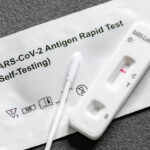Kentucky Injury Prevention and Research Center’s Work to Prevent Substance Misuse
In 2005, the Kentucky Injury Prevention and Research Center (KIPRC) began focusing on transportation-related injuries under the state’s Fatality Assessment Control and Evaluation Program. KIPRC travels to sites of worker fatalities, investigates the causes, and ultimately makes behavioral, administrative and engineering control recommendations that would prevent future occupational deaths.
The first investigation was of a truck driver who was only 23 miles from his start point when he went through a busy intersection then up an embankment before crashing. The toxicology report found that he had methamphetamines and benzodiazepines in his system.
The next month, they had another case that was related to drugs. KIPRC quickly made the recommendation to build a statewide drug database focused on identifying truck drivers who tested positive for drugs and ensuring that job applications to other trucking companies would be aware of their previous substance use history.
From that point, analyses of multiple data sets became an integral part of Kentucky’s efforts to fight what became the opioid epidemic.
Comprehensive Data Sources
After they identified the drug-related pattern in transportation-related truck driver deaths, they examined all their data sources—spanning emergency department, trauma, crash, inpatient hospital, mortality, and workers’ compensation data, etc.—and produced comprehensive reports on drug overdoses.
The information KIPRC provided resonated with what the State Department for Public Health was finding—as they had begun to see spikes in drug overdoses in the data they monitor and manage.
KIPRC collaborated with the state’s prescription drug monitoring program called KASPER, which produces reports showing all Schedule II through V prescriptions dispensed for a person over a specified time period.
To further enhance the PDMP reports, the Bureau of Justice Assistance funded KIPRC and the PDMP to develop and implement an algorithm that calculates milligram morphine equivalents and make them available to physicians in PDMP patient reports to inform appropriate opioid prescribing. This also included a separate algorithm to calculate overlapping opioid and benzodiazepine prescriptions.
Additionally, the PDMP added a flag to the electronic reports that identifies elevated MME situations where it might be appropriate for the physician to also co-prescribe naloxone, mostly when the physician is prescribing opioid medications. To further the use of naloxone, KIPRC worked with the Kentucky Department of Criminal Justice Training to train more than 900 law enforcement officers on the proper use and administration.
In 2016, KIPRC helped create training for advanced practitioner registered nurses on the epidemic. During the training, nurses were educated on querying the PDMP, possible alternative opioid prescribing strategies, Kentucky’s opioid prescribing regulations, and care of patients with pain in both acute and primary care settings. Later that year, the program was extended to physicians. And, to date, more than 1,500 controlled substance prescribers have received training.
KIPRC additionally performs ad hoc data requests, allowing counties and state agencies to ask for a certain slice of data that is specific to their communities and populations. It can also be broken down by age, substance, and whether there are overlapping diagnoses for illnesses like HIV, Hepatitis C and endocarditis.
Going forward, a KIPRC epidemiologist is overlaying public health and public safety data that looks at heroin and methamphetamine trafficking arrests, possession arrests and related emergency department visits, hospitalizations, and overdose deaths to find hot and cold spots. Future analyses will include fentanyl and other drugs as well as comprehensive drug seizure data.KIPRC also manages the Drug Overdose Fatality Surveillance system, which draws on multiple data systems (autopsy reports, death certificates, coroner investigation, the state PDMP, etc.).
The results are used to inform legislative policymaking and provide info to stakeholders to advocate. For example, data pulled from the 2013-2015 reports found that in one-third of overdoses, gabapentin was involved. With this knowledge, the state made gabapentin a Schedule V substance and fully integrated it into the PDMP in July 2017.
Kentucky is the only state in nation that requires—when no specific cause of death is determined—decedent testing for controlled substances. Previously, 70 percent of drug overdose death certificates listed the specific drug(s) involved in drug overdose deaths. Now, 81 percent of drug overdose death certificates list the specific drug(s) involved in the fatal overdose.
Going Beyond Data
A KIPRC community coalition specialist goes into counties with the highest overdose death rates to provide technical assistance and strategic planning to establish or improve drug overdose prevention programs and initiatives.
KIPRC is also establishing a website with a substance use disorder treatment availability locator – so people can get help. They are working with every single treatment provider in the state to update their treatment slot availability on a nightly basis. The website will become live in January 2018 and will include available level of care, treatment type and payment type accepted.

